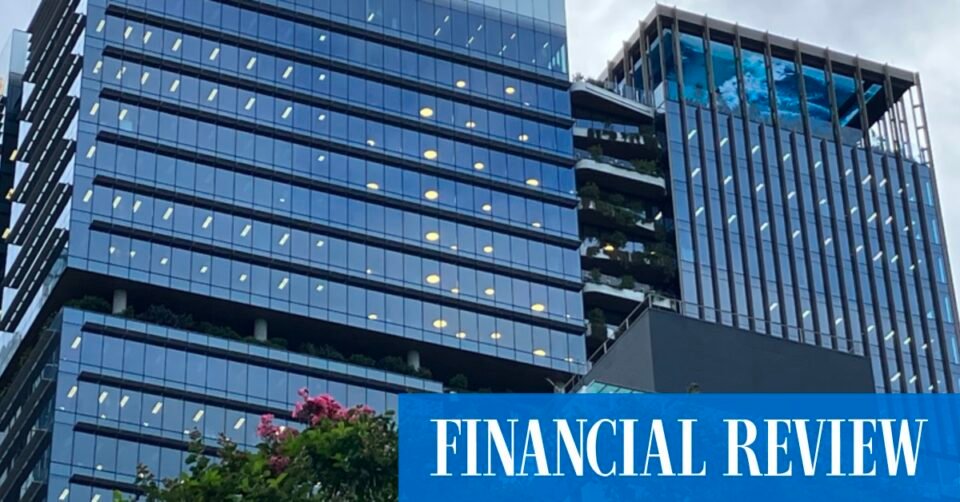It’s not the only pressure point on Suncorp, with questions remaining over the success of a proposed $4.9 billion sale of its banking arm or the sector’s absorption of troubled parts of a compulsory insurance scheme in Queensland. The shadow of a government inquiry examining rapid premium pricing is another threat.
Still, some bearish points could also turn out to be bullish factors for Suncorp – storm damage might be less than feared, for instance, or the bank sale could clear a final hurdle.
Suncorp is a banking and insurance group formed in 1996 from the merger of state and ASX-listed entities, with brands including AAMI and Apia. It also has a bank with $66.9 billion in loans, which ANZ wants. But the proposed acquisition was knocked back in August by the Australian Competition and Consumer Commission, stunning Suncorp staff, including those who assembled outside headquarters to air their disbelief.
The sale’s fate now rests on an appeal to the Australian Competition Tribunal, with a decision due in February.
Morgan Stanley’s Andrei Stadnik suggested the likelihood of a deal being approved was between 60 per cent and 65 per cent. Writing last month, when the share price was trading at $14.05, he expected a sale approval would boost the stock by 5 per cent to 12 per cent. A knockback could hit between 5 per cent and 10 per cent, he estimated.
Shares have since travelled slightly down, and closed on Friday at $13.70. A sale would give Suncorp potentially billions of capital to play with – with perhaps a return to shareholders or even another shot at buying the local insurance arm of Zurich.
But not selling the bank would mean the conglomerate was laden with a lending arm despite Suncorp arguing it would be better running purely as an insurer. Then there is the potential distraction of whether Bendigo Bank, which has long pined for Suncorp’s bank, would be able to make an offer that was acceptable to the Queensland-based company’s board.
The cyclones and storms, meanwhile, also saw Suncorp swing into gear with handling insurance claims. Suncorp notified the market in early January it had 19,000 claims since November, most in Queensland. It declined to update the numbers last week.
Sharing the pain
Mr Stadnik said assuming the average claim cost $20,000, Suncorp had gross costs of $380 million. But that is reduced by Suncorp’s Queensland market sharing the pain with what’s called a quota share – 30 per cent of premiums and bills are split with other reinsurance quota-share partners.
“We now think Suncorp is unlikely to be substantially below its [first six-month disaster] budget,” Mr Stadnik wrote. That internal budget is $680 million.
The actual cost is murky – fellow insurer RACQ said much of the Gold Coast storm damage, for instance, was not severe to homes.
Auto & General, behind cheaper brands such as Budget Direct, estimated it had chalked up 7000 claims costing $90 million, including from Cyclone Jasper, hail in the NSW Hunter Valley and Gympie, Queensland, and the Gold Coast storms. That indicates an average of $12,860 per claim.
Suncorp’s main rival, Sydney-based IAG, a day later announced it had 17,000 claims. The similarity to Suncorp’s 19,000 surprised JPMorgan analyst Siddharth Parameswaran, given IAG has a much lower Queensland market. “This implies that IAG has had materially more claims than Suncorp outside of Queensland,” he said.
UBS analyst Scott Russell said both insurers were indicating losses would still be below their budgets. He had mildly increased his damage expectations for the first six months of this financial year, following a benign first three months, partly eroded by the wild weather in the final three months.
Suncorp is also absorbing the remnants of RACQ’s decision to quit Queensland’s $1.7 billion premium compulsory third-party insurance scheme, which covers people injured in car accidents. RACQ had 26 per cent of the market in June last year, but quit saying the scheme was “not viable”.
The state regulator has split RACQ’s share among the three remaining insurers – Suncorp, Allianz and QBE. That has raised questions about whether they will pick up bad risks or can surpass RACQ’s handling of claims.
Suncorp also appears to have acquired extra customers too, along with its apportionment of RACQ’s market. Latest regulatory figures show Suncorp’s market share is now 52.23 per cent, up 8.87 percentage points, slightly higher than if it had just acquired its split of RACQ’s share.

